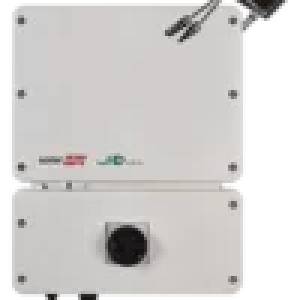Description
Powering Your World: A Comprehensive Guide to Inverters
Inverters are essential components for converting direct current (DC) electricity into alternating current (AC) electricity. This seemingly simple function unlocks a world of possibilities, enabling you to power your devices and appliances from various DC sources, making them indispensable for off-grid living, emergency preparedness, and specialized applications. This guide details the different types of inverters available, their key features, and how to choose the right one for your needs.
Types of Inverters:
We offer a range of inverters to suit diverse power requirements and applications:
1. Pure Sine Wave Inverters:
- Description: These inverters produce a clean, smooth sine wave output, identical to the electricity supplied by your utility company. This is crucial for sensitive electronic devices like computers, televisions, and medical equipment, as it prevents damage and ensures optimal performance.
- Advantages: Superior compatibility with sensitive electronics, longer lifespan for connected devices, quieter operation.
- Disadvantages: Generally more expensive than modified sine wave inverters.
- Ideal for: Home appliances, computers, sensitive electronics, medical equipment.
2. Modified Sine Wave Inverters:
- Description: These inverters produce a stepped, approximated sine wave, which is less pure than a pure sine wave.
- Advantages: More affordable than pure sine wave inverters.
- Disadvantages: May cause humming or buzzing in some devices, potentially damaging sensitive electronics over time. Not suitable for all appliances.
- Ideal for: Basic appliances like lights, fans, and simple power tools. Not recommended for sensitive electronics.
3. DC-to-DC Converters (Boost Converters):
- Description: While not strictly inverters, DC-to-DC converters boost a lower DC voltage to a higher DC voltage. Often used in conjunction with inverters to efficiently manage battery power.
- Advantages: Efficient power conversion for battery systems, smaller size compared to traditional inverters for similar power output.
- Disadvantages: Only converts DC to DC, requiring a separate inverter for AC power.
- Ideal for: Boosting battery voltage for improved efficiency, powering higher-voltage devices from lower-voltage batteries.
Key Features to Consider:
- Power Output (Watts): Determines the maximum power the inverter can handle. Choose an inverter with sufficient wattage to meet the combined power draw of all connected devices. Always factor in surge power requirements.
- Waveform Type: As discussed above, choose pure sine wave for sensitive electronics and modified sine wave for less sensitive appliances.
- Input Voltage (DC): Matches the voltage of your power source (e.g., batteries).
- Output Voltage (AC): Typically 120V or 230V, depending on your region.
- Efficiency: Measured as a percentage, indicating how much of the input power is converted to usable output power. Higher efficiency means less energy wasted.
- Protection Features: Look for features like over-temperature protection, overload protection, short-circuit protection, and low-voltage protection to safeguard your equipment and the inverter itself.
- Form Factor: Choose between portable, rack-mountable, or other form factors based on your installation needs.
Choosing the Right Inverter:
To select the perfect inverter, carefully assess your power requirements. List all devices you intend to power, noting their wattage and surge wattage. Add these values to determine the total power needed. Choose an inverter with a wattage rating exceeding this total to ensure reliable operation. Consider the type of devices you'll be powering to determine whether a pure or modified sine wave inverter is appropriate.
Contact us today to discuss your specific needs and find the ideal inverter solution for your application!
